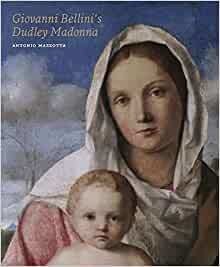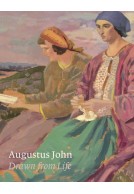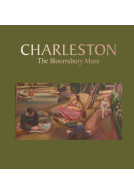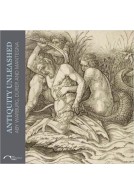Giovanni Bellini's Dudley Madonna (Paperback)
(click here for international delivery rates)
Order within the next 10 hours, 58 minutes to get your order processed the next working day!
Need a currency converter? Check XE.com for live rates
The Virgin Mary rises up like a giant Tower of Babel in a close-up view, separated from us by a slender railing along which runs the painter's signature. The Virgin appears to be sitting on a marble slab, slightly raised, and her right shoulder is thrust forward to show us her nude son. Madonna and Child, also known as 'Dudley Madonna', was painted in c. 1508 by Giovanni Bellini (Venice, c. 1430–1516), one of the most celebrated of Italian artists. This book tells the story of the painting, its painter and its provenance – the journey from Bellini's 16th-century Venice to Dudley's 19th-century London – and the context in which it was created, and later collected. The painting was probably acquired in Bologna by John William Ward (1781–1833), who in 1827 became the 1st Earl of Dudley. He was described by his contemporaries as a cultured and educated man, but also, especially in his later years, tending to madness. The Dudley collection was one of the most outstanding in 19th-century England. The years 1505–10 were crucial ones in Giovanni Bellini's career, and this book examines anew the part he played in Venetian High Renaissance painting – his influence upon and response to the upcoming Giorgione, Titian and Sebastiano del Piombo; it looks in particular at the importance of the visit to the Venice of the Florentine Fra Bartolommeo in 1508. Antonio Mazzotta was Pidem Curatorial Assistant at the National Gallery, London, between 2008 and 2010, and he curated the exhibition, Titian's First Masterpiece: The Flight into Egypt, at the National Gallery, London, 4 April – 19 August 2012.
The Virgin Mary rises up like a giant Tower of Babel in a close-up view, separated from us by a slender railing along which runs the painter's signature. The Virgin appears to be sitting on a marble slab, slightly raised, and her right shoulder is thrust forward to show us her nude son.
The Madonna and Child, also known as 'Dudley Madonna', was painted in c. 1508 by Giovanni Bellini (Venice, c. 1430–1516), one of the most celebrated of Italian artists. Recognised as an important composition by Bellini in the early 20th century, for a hundred years until its sale at auction in 2010 this picture had hardly ever been seen. This book places the painting within Bellini's career and development even though he was over 75 years old when he painted it. Bellini was extraordinarily sensitive to the new generation of High Renaissance artists, responding instantly to new ideas. The publication also discusses the earlier critical fortune of the painting, explaining how it was kept out of the limelight for so long when it is clearly an autograph Bellini.
The years 1505–10 were crucial ones in Giovanni Bellini's career, and this publication examines anew the part he played in Venetian High Renaissance painting, his influence upon and response to the upcoming Giorgione, Titian and Sebastiano del Piombo. It looks in particular at the importance of the visit to the Venice of the Florentine Fra Bartolommeo in 1508, a key figure in early 16th-century Florence, who came with a wealth of important new ideas to share and disseminate. His influence on Bellini is most obviously evident in the Madonna's – for him – comparatively oblique pose.
It is not known how and when the painting came from Italy to England but it is very likely that is was acquired in Bologna by John William Ward (1781–1833) who, in 1827, became the 1st Earl of Dudley. Described by his contemporaries as a cultured and educated man, he (and later his nephew William Ward) assembled one of the most outstanding collections in 19th-century England but, although talented, tended to madness especially in his later years. The collection was broken up at the end of the 19th century and the painting, having been attributed to the obscure Rocco Marconi by Berenson, was kept in a private collection in a country house in Wiltshire.














